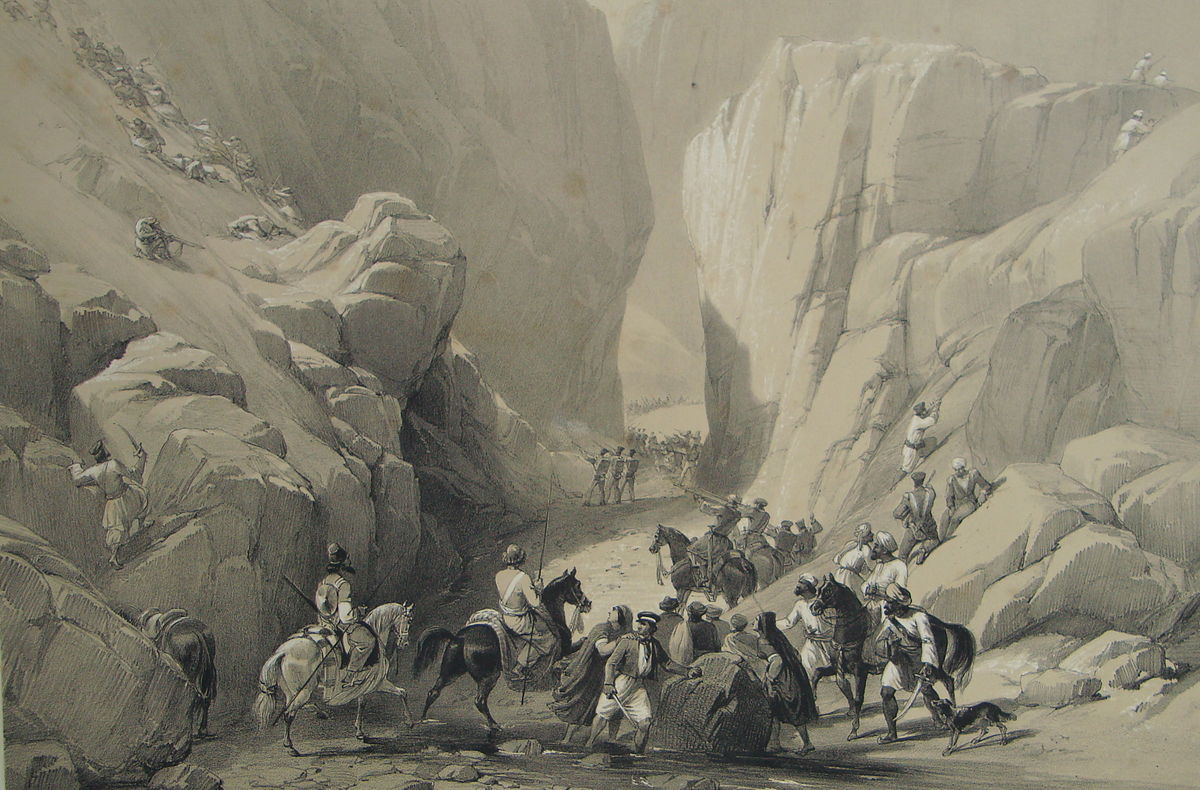
British invasion of Afghanistan
Kandahar, AfghanistanThe "Army of the Indus" which included 21,000 British and Indian troops under the command of John Keane, 1st Baron Keane set out from Punjab in December 1838. With them was William Hay Macnaghten, the former chief secretary of the Calcutta government, who had been selected as Britain's chief representative to Kabul. It included an immense train of 38,000 camp followers and 30,000 camels, plus a large herd of cattle. The British intended to be comfortable – one regiment took its pack of foxhounds, another took two camels to carry its cigarettes, junior officers were accompanied by up to 40 servants, and one senior officer required 60 camels to carry his personal effects.
By late March 1839 the British forces had crossed the Bolan Pass, reached the southern Afghan city of Quetta, and begun their march to Kabul. They advanced through rough terrain, across deserts and high mountain passes, but made good progress and finally set up camps at Kandahar on 25 April 1839. After reaching Kandahar, Keane decided to wait for the crops to ripen before resuming his march, so it was not until 27 June that the Grand Army of the Indus marched again. Keane left behind his siege engines in Kandahar, which turned out to be a mistake as he discovered that the walls of the Ghazni fortress were far stronger than he expected. A deserter, Abdul Rashed Khan, a nephew of Dost Mohammad Khan, informed the British that one of the gates of the fortress was in bad state of repair and might be blasted open with a gunpowder charge. Before the fortress, the British were attacked by a force of the Ghilji tribesmen fighting under the banner of jihad who were desperate to kill farangis, a pejorative Pashtun term for the British, and were beaten off. The British took fifty prisoners who were brought before Shuja, where one of them stabbed a minister to death with a hidden knife.
